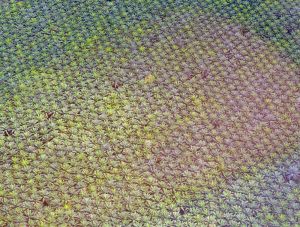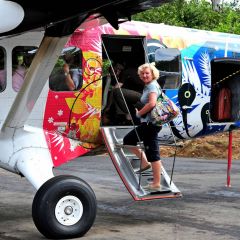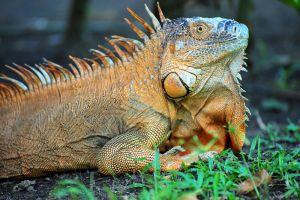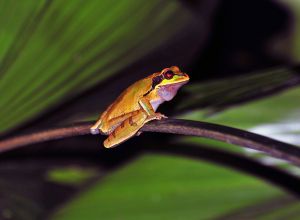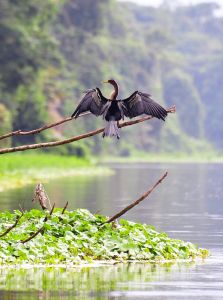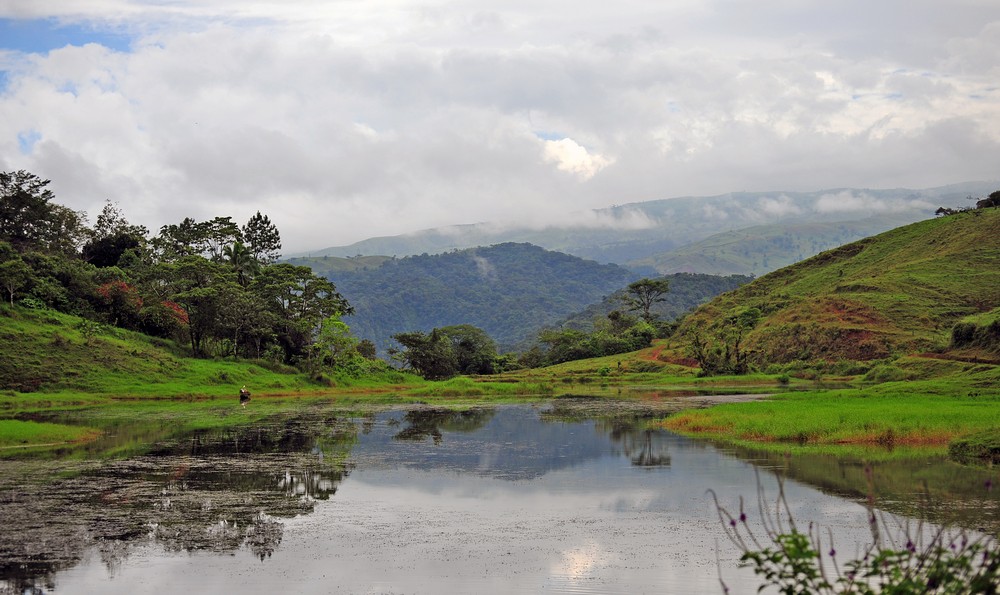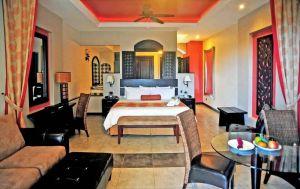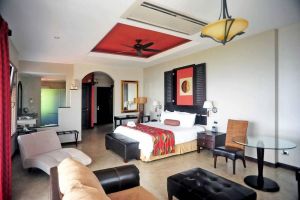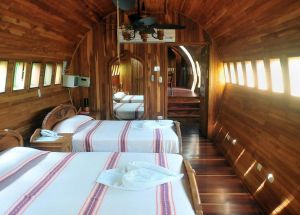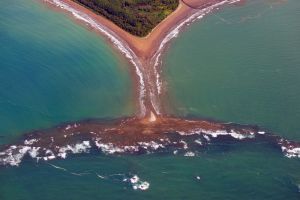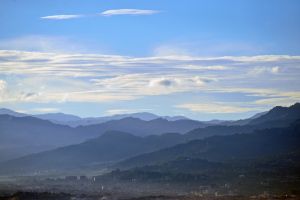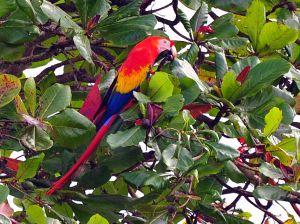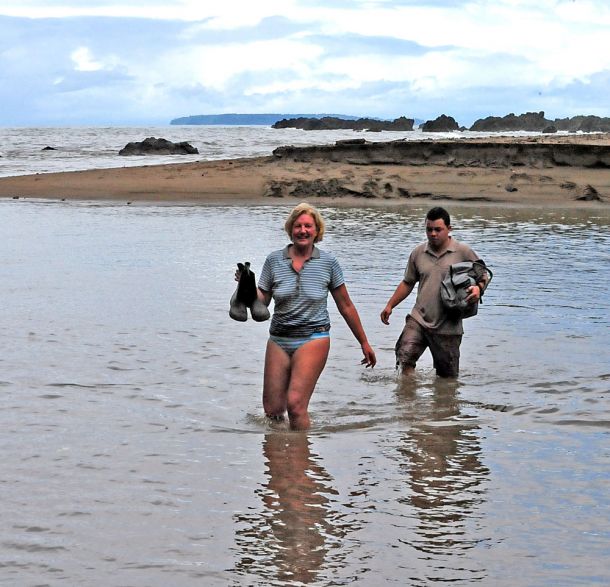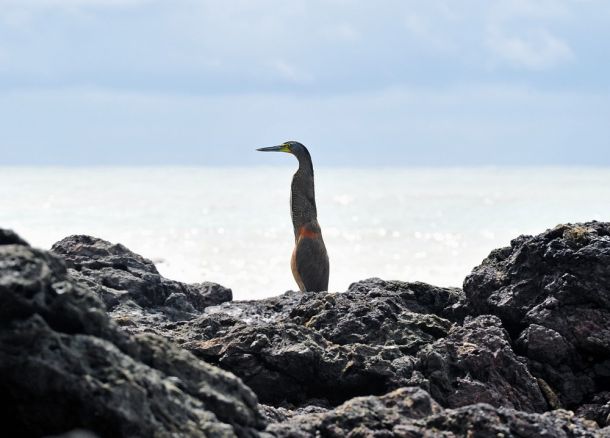The more we think back to what we did in Costa Rica, the more I think we enjoyed it. I say, think, because whilst there we learned of the tragic accidental death of a very close relative which put our trip very much under a cloud. That said, I think the whole of our travels in Costa Rica were under a cloud as the weather, (being a tropical climate) and the terrain (that goes from coastal rainforest to highland volcanoes) seemed to have it in for us in terms of damp cloud. More fool us perhaps for travelling there in November, which is in the wet season.
All that said, we’ve written the preamble above so that what comes next is with that perspective in mind. Many seek out the delights of Costa Rica for its wildlife, outdoor pursuits and inherent vibrancy but in all honesty it didn’t fill us with a desire to return. All-in-all it was a seamless trip and the people were extremely hospitable and helpful but we couldn’t escape from the impression that there are countries with far more ‘character’. We did, however, do a tremendous amount and Costa Rica can certainly be recommended for its diversity of appeal.
The country is laudable for having disbanded its standing army in favour of investment in education and its one of the most stable Central American countries – so there are no worries about travel or security within it. We were driven for part of our tour and drove ourselves for the remainder as well as taking internal flights where distance outweighed time. As usual, the links for each of the lodges we mention follows at the end of this piece.
Cherrie: We started off in San Jose for a night at Hotel Alta (a strange mix of traditional architecture externally and rather more grand ‘monumental’ common parts that didn’t gel together particularly well for us – nor did the noisy extractor in our room, lack of tea making facilities and incorrect bedside clock for our wakeup) before an early morning departure to the ‘Humid Zone’ and Tortuguero National Park on the Caribbean coast. Here we boarded a large launch and spent the next hour or so weaving our way at speed down a bright pea-green canal before it opened out into a much broader waterway with lush rainforest right to the water’s edge and the occasional lodge cut into its banks.
We left the launch at Mawamba Lodge and booked into our own cabin set amidst the greenery of the clearing in the forest. For the next couple of days we would see as much wandering around our own ‘campus’ as we did exploring the small canals and streams in the small boats that the lodge owned. In between the short sharp rain storms the area came alive with wildlife and the natrualists were as happy to explain what we were finding on the site as when out in the boats. Dining was buffet style in a large communal covered area adjacent to the pool. Whilst here we also took the opportunity to visit some of the other nearby lodges for comparison. They’re similarly spaced at regular intervals along the water’s edge and are differentiated between mainly for the layout of their site rather than facilities. With the exception of Manitus Lodge, which was of conventional solid construction the balance were almost always of a more pleasing wooden cabin style. I think it’s fair to say that all of them offer a good standard of accommodation and facilities and that Mawamba is certainly as good as you’ll find.
We got used to going out in boats in ponchos and protecting our gear whilst trying to get the best vantage points for cameras or binoculars and quickly struck up a rapport with our fellow boaters, so the whole event was far from being a chore despite occasional discomfort. Our aim with this trip was to gain as broad an impression of Costa Rica in the three weeks we took. In retrospect our itinerary proved to be a good one in that the three days we spent in each of the locations was about right to get sufficient appreciation without ‘saturation’ in any one area.
From Tortuguero we headed for Arenal, high in the Central Highlands and at the base of Arenal Volcano.
Cherrie: Staying at Kioro Hotel, a very modern but stylish hotel with contemporary furnishings and walls of glass, we were literally at the base of the volcano and enjoyed a stunning view of the smoking peak from our room on the one occasion that the cloud lifted. There was also a hot tub in our bedroom if we’d really wanted to drown our sorrows!
Again, there’s a good section of luxury hotels and apartments in Arenal so it’s largely down to the style you prefer as to which you’d select if visiting here – fully catered in a purpose built hotel (such as Kioro that we stayed in), an apartment style complex set in rolling rainforest grounds (such as Manoa Hotel Apartments) or individual lodges around a central complex (like the beautiful Lost Iguana) – they’re all there and all excellent in their own right.
We particularly liked Nayara Hotel and Gardens for its sympathetic distribution of rooms around the extensive grounds and the lovely rooms of spacious proportions, gracious decorations and Indonesian hardwood furniture set within traditionally Balinese inspired architecture. Our video below will show you images of each hotel.
Many of the hotels also have hot volcanic spring water flowing through their property for you to bathe in. One is the luxurious Springs Resort & Spa, where all rooms are suites but we haven’t reviewed it here as it wasn’t finished when we were there and it’s now having extensive works to increase its size. Its reputed to be one of Costa Rica’s finest.
Other than the rather obvious Volcano exploring (it’s still active so don’t set out before checking)and National Park, it’s possible to cover most pursuits in Arenal, from horseback riding to white water rafting, biking and hiking, zip-wire and bungee jumping if you’ve a mind. A good rule of thumb is to organise locally through the companies that operate these attractions rather than any ‘guide’ who might approach you on the street.
On this trip we decided against travelling into the Western Guanacaste region which appears to be largely American populated beach resorts, opting by preference to drive our own rental car down into Quepos and Manuel Antonio on the southern Pacific coast. We drove ourselves, partly for the experience, partly for the freedom to go where we pleased on the picturesque and sometimes dramatic country roads, as there were no multi-lane highways outside of the main towns. There are also very few road signs and travel instructions tend to be general at best. We had a satnav but it only gave very basic information and routes.
For a good way we rode the Pan-American Highway but generally the roads and bridges can be less than perfect! Erratic driving (not ours) seems to crop up wherever we go and Costa Rica is no exception. If you drive yourself – just keep an eye out for drivers who simply drive fast in the middle of the road! All that said it’s well worth doing and can be a lot of fun – it’ll certainly give you a lot of stories for your diary.
Cherrie: Before reaching Manuel Antonio we stopped off at Alma Del Pacifico Beach Hotel & Spa. We would be staying at its former sister hotel in San Jose, the Xandari Resort & Spa but wanted to get a feel for what lay in store. It’s located between the towns of Jaco Beach and Quepos, and if you wanted to come straight here is just a two-hour drive from San Jose International Airport. Alma Del Pacifico Beach Hotel & Spa, which before it changed hands was the Xandari by the Pacific, features over one hundred and fifty works of original art throughout the resort by American artist Charlene Broudy who with her husband, architect Sherrill Broudy, created the Alma with the intent that guests would be immersed not only in nature but also art and design. We have to say, it’s stunning and very much ‘our sort of place’ in that it steps aside from the normal notions of luxury and introduces originality in all its forms – from the individually designed and dramatic lodges with their bright primary colours, huge walk-in showers that bring the tropics indoors through to the meandering walkways amidst tropical groves full of birdlife, to the main building and thatched restaurant with the Pacific crashing ashore in front – this hotel had it all for us. We couldn’t wait to stay at Xandari Resort.
On arrival in the Manuel Antonio area we stayed at El Parador Hotel in Quepos, which was outstanding in terms of quality, service, accommodation and setting but it seemed a little too formulaic for us – a bit too Stepford wives! It was faultless in every way and Geoff and I differed in which of the other hotels in Manuel Antonio we might have preferred – so I think on balance it was because there was no clear alternative; we were trying to find a winner and didn’t really come up with one other than El Parador. We visited a few other recommends including Costa Verde, which was more notable for its amazing Boeing 727 fuselage suite that sticks out of the trees, than perhaps its other facilities and rooms. For me, I quite liked Hotel Arenas del Mar; well mainly the situation of it – hanging as it was on the side of the cliff but Geoff didn’t as he said it had dark rooms and dark sand on the beach and didn’t create his idea of a Pacific resort.
The Falls Resort is certainly trying to excel but isn’t there yet, whilst the Mansion Inn had some very quirky and interesting features, including a bar/private dining area – the bat cave – cut into the rock-face but the rest of the hotel and dining area is Spanish style and generally much more basic, heavy and perhaps brash – it was neither Boutique nor five star, as it promotes itself, in our opinion.
The Tulemar Gardens Apartments and rooms are unusual in that the larger family rooms are terraced out on the hillside and offer large airy spaces. The grounds are also spacious with a couple of pools and various bars but again, we felt that something was lacking here; if only ‘personality’.
Some of the nicest rooms we found were in the much smaller boutique Makanda by the Sea, which with its limited number of bright airy rooms, including a honeymoon suite and Villas that can sleep up to six people, had much the feeling of a private residence. Set in beautifully arranged terraced gardens, other than its long hike down to a private beach with few facilities it’s probably one of the only places we’d have liked to stay as an alternative to El Parador.
Manuel Antonio is best known for its National Park and a professional guide will help you get the best out of it as it’s often difficult to spot the wildlife. Be prepared for a little wading through some of the pools and a walk along the scythe shaped beach will also give you the opportunity to bathe or sit alongside raccoons and iguanas!
Eating out in style outside of the hotels is limited but if you’re interested in the bizarre then a visit to El Avion is worthwhile. It’s a downed Fairchild C-123 freighter which supposedly is responsible for exposing President Reagan’s Contra affair of gun running into Nicaragua when shot down by the Sandinistas. Whatever, its hulk now houses a bar with restaurant outside.
Waiting at the small regional airstrip near Manuel Antonio for our flight to Sierpe we couldn’t help wonder how aircraft would get in and out of the airfield with the imposing forested ‘mountain’ at one end. As we were the only people about to board the Nature Air flight there wasn’t anyone to discuss this with but on the assumption we weren’t the first to attempt it, sat quietly as the incoming aeroplane seemingly stood on its nose to make the steep descent to the tarmac runway; just after a crop duster landed ahead of it and pottered off the strip to one side. With barely a ten minute turnaround we were swiftly ushered to the open cabin door and strapped in, before the little Twin Otter was racing down the runway in the opposite direction to which it had landed. Needless to say the climb-out was dramatic.
The flight takes you along the coast and is an ideal introduction to the wild Osa Peninsula. It’s fascinating to observe nature at work in the way that it continues to form the coastline – from huge silt run-off from river-mouths that deposit a swathe of green, tens of kilometres wide, into the brilliantly blue Pacific; the ‘Whale tail’ sand bar that extends one kilometre offshore and forms a perfect whale tail shape from the air; the fantastic snake-like meandering rivers and oxbows that have cut their way into the lush rainforest below – Nature Air is so aptly named.
The approach to land is over extensive palm plantations that fill the view from the small aircraft window, reminding us that this area has been used intensively for palm oil, cocoa, gold mining and logging and is only now giving way to ecotourism. Landing in Sierpe we stepped out of the plane onto another rudimentary strip with a shed for a terminal building. It’s this sort of rudimentary nod to necessity that makes us feel as though we’ve arrived somewhere really interesting and sets the scene for what’s to follow. Here we were collected by private car and taken past the rotting hulk of an old working steam engine and through the sleepy village of Sierpe to the water’s edge of the Sierpe River. To the sound of iridescently coloured Scarlet Macaws squawking in the trees around us we board a fast launch of about eight metres long on which there were five other passengers.
The languid way we cruise down the lurid green river, spotting birds and the occasional crocodile at the water’s edge is poor preparation for the roller coaster ride across Drake Bay as we thrust our way across the inshore waters of the Pacific. The little launch is up to the task, even if some of the passengers aren’t so resilient and after an hour or so we’re running with the surf between the rocky outcrops that thread a passage onto the shore. This feels more like a military beach landing than a gentle approach for tourists but adds to the energy and adrenaline rush as we beach the boat and hop swiftly ashore before the waves topple us.
The leisurely haul up the steep slope on a tractor-drawn trailer seems tame by comparison as we thread our way up through the cathedral-like shoreline rainforest to our next stay – Casa Corcovado.
Cherrie: The hill-top resort is fashioned from an old Cacao plantation and the thatched cabin we stay in is one of a dozen or more that create this fascinating little community in the forest. Each of the cabins is spacious, individual and well-appointed but basic, as the climate isn’t conducive to frills that will easily perish in the rainy season. Dining is in the main restaurant, a much larger thatched enclosure from which we watch an enormous Anaconda curl asleep on a branch outside the building. The food is good enough to distract us from this reminder that we’re right in the middle of wild rainforest.
The site is extensive (about 120 hectares/300 acres) and laced with jungle trails that will keep you occupied for days trekking through the forest with your accomplished guide. ‘You’re quite safe’ says our guide when our attention is riveted by a couple of crocodiles floating watchfully in the surf as we wade thigh-deep across a river mouth. I wanted a photo of Cherrie wading across the river so was forced to go first – not a natural tendency – so taking the guide at his word, with some trepidation I crossed safely, if not a little hurriedly. Although it’s always wise to follow a guide’s advice, I never feel as the need to abdicate all responsibility for safety to them. A sense of self-preservation runs high and we know that whilst wild animals and reptiles, with knowledge of their behaviour, are for the most part predictable, there’s always the possibility of an exception.
All of this adds to the awareness of the fact that we’re in one of the wildest parts of Costa Rica and whereas the trip so far has felt a little benign, Casa Corcovado reawakens a sense of nature in the raw; whilst offering sufficient comfort and facilities at the end of each day to sooth away any aches.
Our stay here is over too soon and we’re whisked back across Drake bay in the company of a pod of dolphin who display the fascinating behaviour of ‘rounding up’ a shoal of fish by encircling them in ever-diminishing circles until the pod can feed at will in the boiling centre. With knowledge of the duration of this trip we’re more comfortable with the hectic ride and the haven of the River Sierpe at its destination. Before coming ashore we weave through the knotted mass of mangrove swamp with its mass of root tendrils seemingly gripping the water’s surface as we scrape through this sinister latticework of overhanging trees whilst sunlight and birdlife seems to flutter between the branches like an old movie.
Cherrie: The Osa peninsula and Casa Corcovado were probably the highlight of our trip and leaving it seemed an anti-climax as we boarded our flight back to San Jose and relative normality; if it wasn’t for the fact that we were looking forward to our stay at Xandari Resort & Spa. Sister to Alma del Pacifico that we’d already visited, Xandari delivered all that her sister had promised. The same dramatic colour-schemes and artworks, the same graphic design that integrated so well with the exotic tropical environment; excellent cuisine, stunning views across the San Jose valley and every luxury the jaded traveller might desire – we loved it. Each cabin welcomes you into a setting that could be a private villa where you can forget the outside world until you’re ready. We’ve become so accustomed to conformity within luxury hotels that the approach that Xandari has adopted really does blend nature with design in the most refreshing of ways. Its possibly one of the most outstanding places we’ve stayed; not necessarily because of service delivery but more from the realisation that someone had stepped aside from convention with such dramatic results.
By complete contrast we spent a little time at The Peace Hotel, in La Paz waterfall Gardens just an hour from San Jose and also worth considering instead of the usual nondescript airport hotels pre or post-flight. Whereas at Xandari everything is considered and precise, The Peace Hotel looks like an up-market Fred Flintstone resort with bold boulders, wonderful wood and precariously perched rooms amidst the rainforest gardens that surround it. A real novelty, The Peace Hotel is well worth a visit and the private Waterfall gardens provide an excellent introduction to Costa Rican wildlife
I spent a good hour or so attempting to photograph hummingbirds on the wing – with decidedly iffy results – as they approached the feeders that are distributed around the gardens. Whereas the photos failed, the experience was rewarding in trying to identify the myriad species from their stunning plumage. Less attractive was the plaintive Jaguar that paced behind its glass cage to the cacophony of yelling and tapping from visitors on the other side – I wondered which side really housed the animals!
We left Costa Rica with very mixed feelings and preoccupation with what awaited at home but, as I say, in retrospect the trip was very worthwhile and certainly provided a wealth of experiences condensed into a single relatively small and accessible region. Would we go back? I’m not sure but we’d certainly pick a different season which would probably cast a much more favourable light on everything.
Our transit through Miami airport was interesting and the variety of restaurants and outlets make it a more rewarding pause in International travel than do many such hubs.
So, the verdict in our opinion – jury’s out because of our personal circumstances – but do add it to your bucket list; we definitely need to go back to give it a more objective view!

 Let us plan your own inspiring journey to Costa Rica and throughout Central & S. America
Let us plan your own inspiring journey to Costa Rica and throughout Central & S. America
Why not download the TLC World guide brochure or give us a call today on 01202 030443, or simply click ‘enquire’ to submit your own personal itinerary request
![]()


